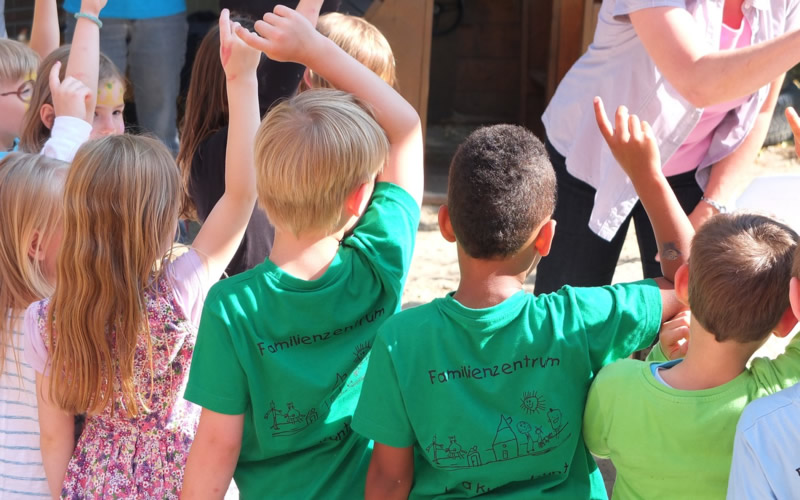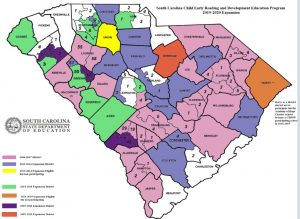
By Andy Brack, editor and publisher | The math is easy. With about about $2 billion in new or surplus tax revenues for the state’s coming fiscal year, there’s more than enough money for the General Assembly to do something it should have long done: Make 4-year-old kindergarten available for all of South Carolina’s poor children.
 Traditionally, kindergarten begins in public schools for 5 year olds. But starting earlier in school makes a difference, according to study after study. For South Carolina to get more at-risk kids in kindergarten, the state will have to steer about $50 million to 4K programs out of the $1 billion in the state’s new recurring revenues — money that will come to the state without raising taxes because of old-fashioned growth.
Traditionally, kindergarten begins in public schools for 5 year olds. But starting earlier in school makes a difference, according to study after study. For South Carolina to get more at-risk kids in kindergarten, the state will have to steer about $50 million to 4K programs out of the $1 billion in the state’s new recurring revenues — money that will come to the state without raising taxes because of old-fashioned growth.
This is a no-brainer. And, it seems, it’s now something Republican and Democratic leaders actually agree on. Gov. Henry McMaster, a Republican, also reportedly will call for more 4K money when he releases his budget recommendations as the General Assembly reconvenes next week.
“We may take it the rest of the way,” said state Sen. Vincent Sheheen, a Kershaw Democrat who for years has been steering more money to help poor 4-year-olds get kindergarten.
GOP state Sen. Greg Hembree, who chairs the Senate Education Committee, said he was for expanding 4K. “We’re not going to make quantum leaps (in education) in the eighth grade, but we can make great strides in the earlier grades,” he said during a legislative preview for reporters.
The time for finishing the job is now. It’s something lawmakers have known for awhile they should do.
Fifteen years ago as the General Assembly was being sued by poor school districts for doling out public education dollars inequitably, it put together a pilot program to offer 4-year-old kindergarten in those districts. The program had success.
In 2013, Sheheen and other lawmakers worked to expand 4K offerings beyond the 33 districts that were part of the pilot program. By 2016, about 30 more districts received 4K monies for at-risk students based on the district’s poverty rating. If a district had a poverty index of 75 or higher, it got money.
But that left out poor students who lived in more affluent districts where the poverty index could be far below the 75 rating. Those students, just as poor as kids on the so-called Corridor of Shame school districts, couldn’t get access to 4K monies because of their zip code. It was another inequity. At the time, an estimated 8,250 4-year-olds in South Carolina — one in seven of kids this age — were at risk but couldn’t qualify for earlier childhood education.

Currently in 62 of 79 South Carolina school districts, the state offers free 4-year-old kindergarten to at-risk children, who are defined as those who are eligible to receive Medicaid.
According to legislative sources, this translates to 4K instruction being given to about 13,000 students in the 62 school districts. Another 5,000 qualify to attend free 4K classes, but don’t participate in public programs for one reason or another.
In the remaining 17 districts, about 15,000 students still are not being served by 4K programs. That would be solved if the state ponied up $50 million in recurring revenue.
Thirty-nine poor school districts filed a lawsuit in 1993 saying they were not receiving fair funding. It took 21 years for the case to wind its way through the courts and years for the legislature to do more to reduce inequities in education funding.
There was resistance to the pilot program. The move to expand the pilot program only got funded through a procedural budget move because it wouldn’t have passed on a straight up-or-down vote.
But like a soup that stews for a long time to become more palatable, state leaders finally seem to have understood, matured and accepted that 4K education makes a difference — and to continue to keep it from poor kids who live in more affluent districts also isn’t fair.
In this surplus and election year, let’s hope state legislators have the backbone to complete a job that should have been finished long, long ago.
- Have a comment? Send to: feedback@statehousereport.com.















 We Can Do Better, South Carolina!
We Can Do Better, South Carolina!
Certainly 4K programs have proven valuable for many students in SC public schools. Over the next few days, it will be interesting to see how the General Assembly prioritizes educational funding recomendations.Will they allocate money for teacher raises; reduced class sizes; scale back on expensive testing requirements; allocate resources to hire more mental health and social workers;step up efforts to recruit and retain teachers.etc etc?? The next few days will tell their true commitment for improved public educational outcomes. Hopefully they will realize their responsibility for educational networking and accountability. All state agencies that are charged with providing support for families and children should be required to show a physical presence in our schools on a daily basis. Work smart or work hard.